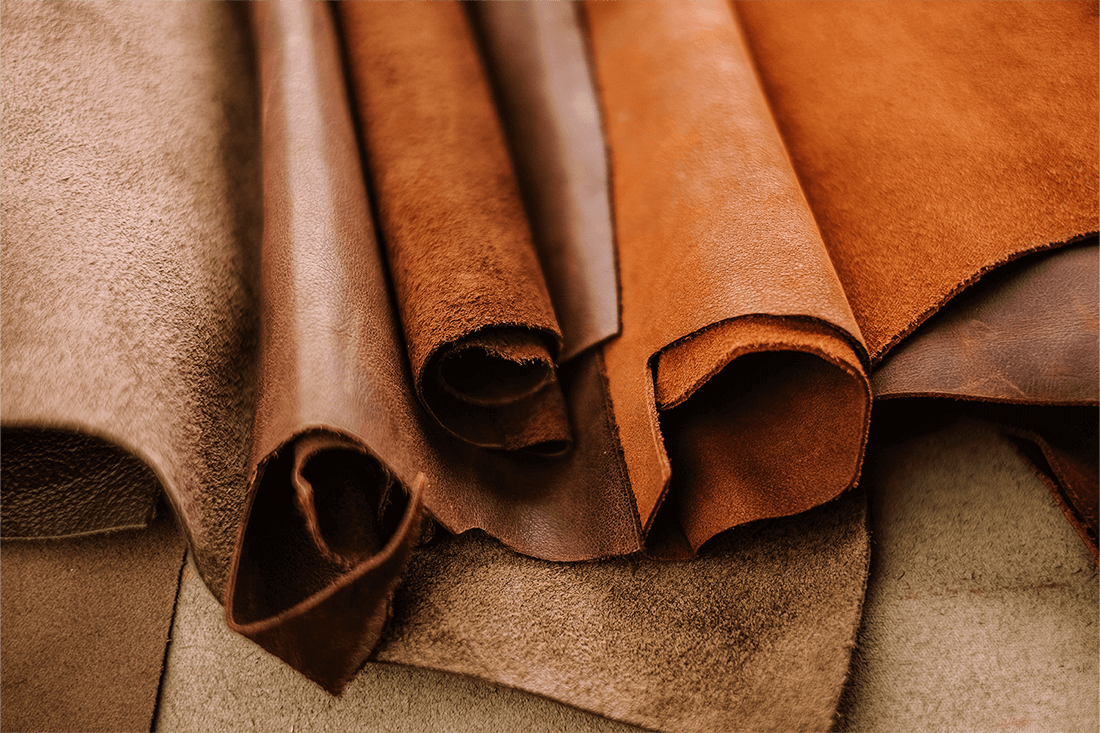
Jun 30.2025
Genuine Leather: A Timeless Material of Prestige and Character
Genuine leather refers to premium-quality material derived from natural animal hides, processed through professional tanning techniques. As an irreplaceable classic in bag manufacturing, it offers unique grain patterns, a supple touch, and breathable properties. Over time, genuine leather ages gracefully, enhancing the bag’s elegance and individuality.
________________________________________
Material Characteristics
1.Natural Grain and Unique Texture
Each piece of leather retains the pores and fine lines of the original hide, making every bag one of a kind. Through various tanning methods (e.g., vegetable tanning, chrome tanning), it can express a wide range of aesthetics—from sleek sophistication to rugged vintage.
2.Soft Yet Durable Flexibility
Leather provides excellent elasticity and adaptability, giving bags a warm, refined feel while enhancing structure and comfort.
3.Breathable and Moisture-Absorbing
Natural breathability allows genuine leather to regulate humidity and reduce stuffiness, maintaining bag quality and extending product life during daily use.
4.Aging with Beauty
High-quality leather develops a unique patina over time—a soft sheen and rich character that reflects the owner’s usage, making each item more personal and storied.
5.Repairable and Maintainable
With regular cleaning and care, genuine leather retains its softness and luster, allowing the product to remain in optimal condition for years.
________________________________________
Common Types of Genuine Leather by Animal Source
•Cowhide
Most widely used, offering thick, durable, and diverse textures. Suitable for various bag styles from refined to rugged, depending on treatment.
•Sheepskin
Lightweight, soft, and smooth. Ideal for luxury handbags and accessories; delicate in feel but less abrasion-resistant.
•Pigskin
Coarse and breathable with prominent grain. Highly durable and commonly used in practical, cost-effective bags and shoes.
•Horsehide
Dense, glossy, and tightly grained, offering strong resistance and a bold appearance—suitable for structured bags needing durability.
•Crocodile Leather
A symbol of luxury. With its distinctive scales and premium price, it’s often used in high-end designer bags.
•Python Leather
Known for unique scale textures and depth. Smooth, with a statement look for accent pieces or fashion-forward designs.
•Ostrich Leather
Features raised quill follicles for a distinct tactile quality. Valued for high-end applications.
•Buffalo Leather
Thick and tough with pronounced, rugged texture. Ideal for vintage-style and durable bag collections.
________________________________________
Popular Tanning and Finishing Techniques
•Vegetable Tanning
Eco-friendly, using plant-based tannins. Offers a rich, natural tone and firm yet flexible texture.
•Chrome Tanning
Fast and versatile, resulting in smooth leather with vibrant colors—suitable for sleek and refined styles.
•Other Finishes:
Includes brushing, embossing, dyeing, and distressing to create vintage effects, polished surfaces, or unique patterns.
________________________________________
Potential Drawbacks of Genuine Leather
1.Higher Cost
Due to its natural source and complex tanning process, genuine leather products are more expensive than synthetic alternatives.
2.Maintenance Required
Needs regular care (moisturizing, waterproofing, sun protection) to prevent cracking, discoloration, or hardening.
3.Lower Water Resistance
While moderately moisture-resistant, leather can absorb water, leading to deformation, mold, or color changes over time.
4.Heavier Weight
Denser than synthetic materials, adding noticeable weight—especially for larger bags.
5.Ethical & Environmental Considerations
Being animal-derived, some consumers may have concerns about animal welfare and the ecological impact of the tanning process.
More Detail
In the global market, leather labeling varies. While “leather” can refer to both synthetic and genuine forms, terms such as genuine leather, real leather, or cuir/leder (in French/German) typically indicate natural hide usage.
In Japan, the term 本革 (Hongawa) is commonly used to clearly distinguish natural leather from synthetic ones, especially by high-end brands such as Tsuchiya Kaban.
